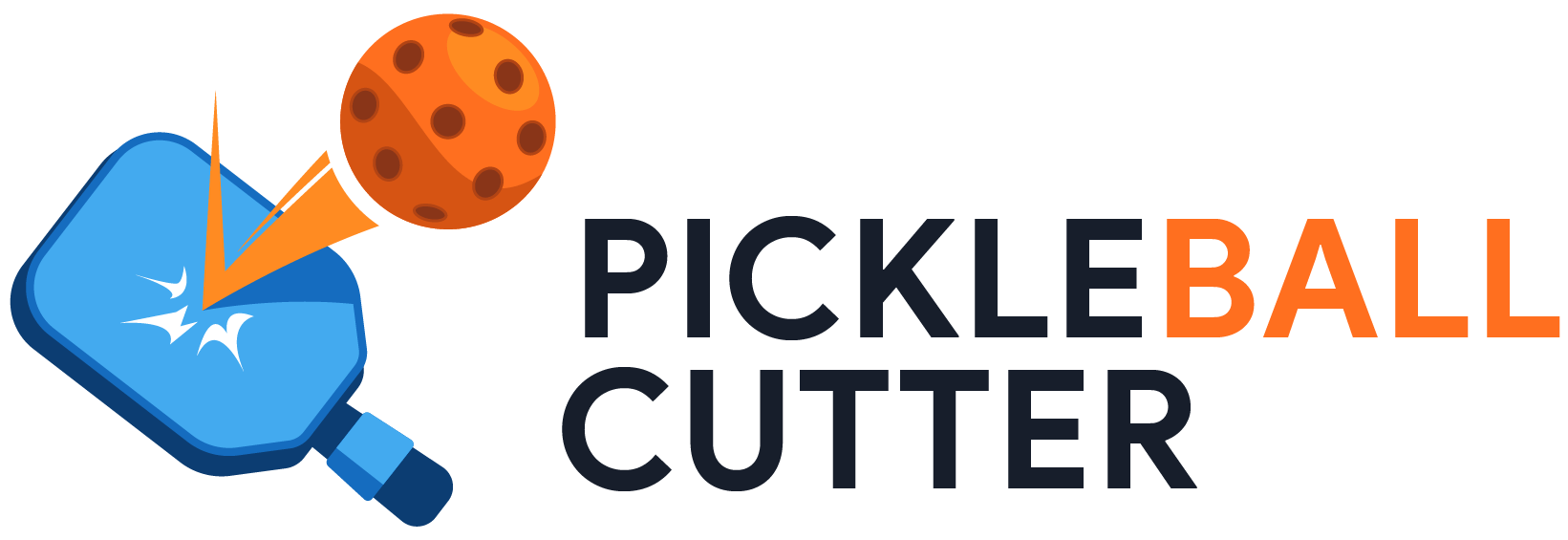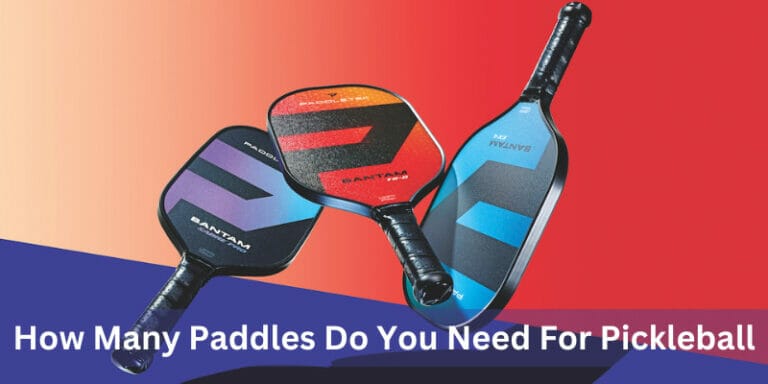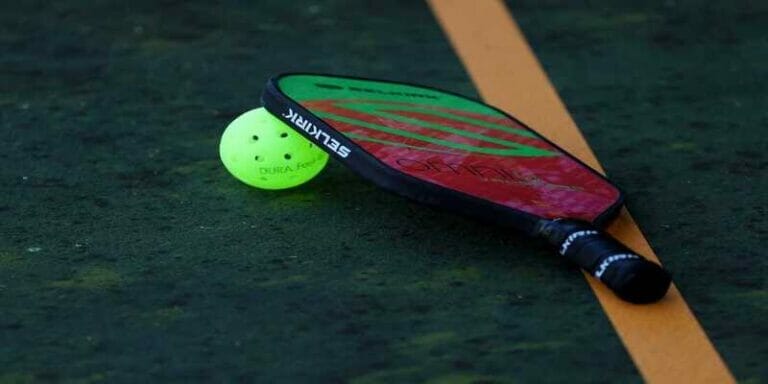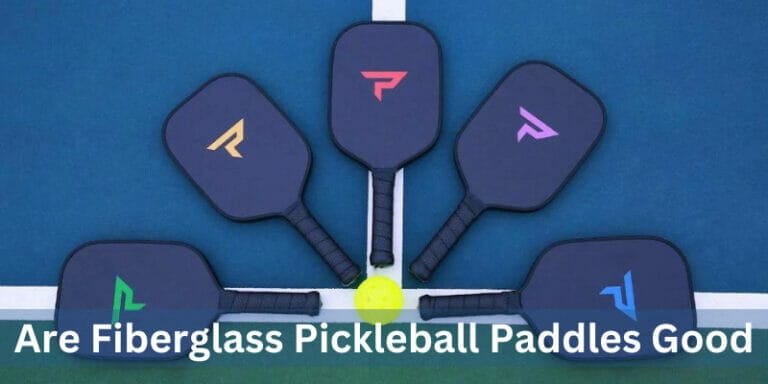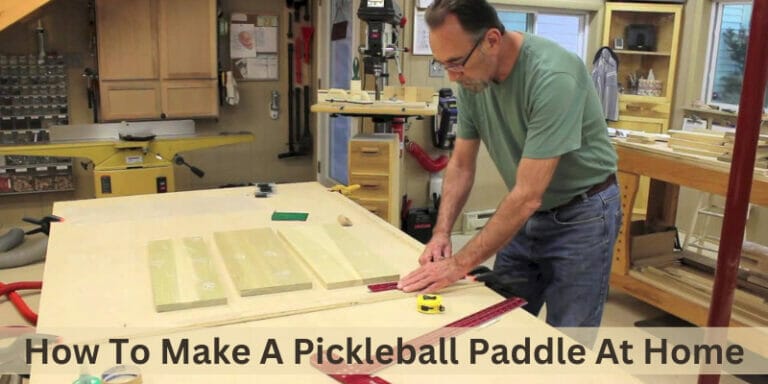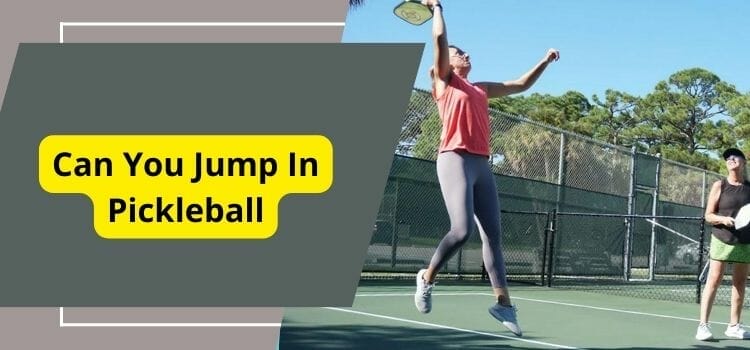What are the rules for serving in pickleball | Complete Guide
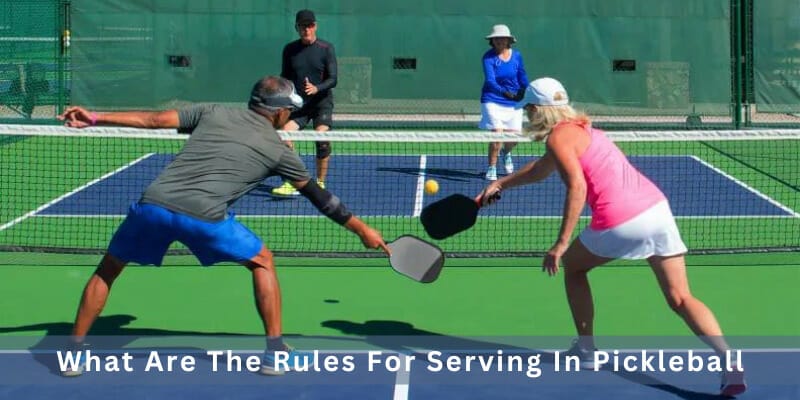
One small mistake in serving can cost you the game, but mastering the rules can make you a champion.
Pickleball serving rules require the server to stand behind the baseline, alternate sides, and hit the ball underhand. Two legal serves include the volley and drop serve. Faults and let serves may occur, but players can improve their serving skills with practice.
As a beginner in pickleball, I struggled to understand the serving rules. But with patience and practice, I learned about the service box, the two types of serves, and the official rules. Now, I confidently serve without any faults and enjoy the game to the fullest.
In this article, we’ll cover all the essential information you need to know about what are the rules for serving in pickleball, including main rules and advanced techniques.
Without any delay, Let’s dive into it
What are the rules of serving in pickleball – Comprehensive Guide
Players must understand the standard pickleball serve rules to avoid faults and perform legal serves. Here’s a brief overview of the current rules regarding the pickleball serve:
- The server must stand behind the baseline and between the centerline and sideline of their side of the court.
- The pickleball serve must be made underhand, with the paddle below the server’s wrist at the time of contact with the ball.
- The serve must be hit diagonally cross-court to the opponent’s service court.
- The serve must clear the non-volley zone and land in the opponent’s service court.
- The receiver must stand in the diagonal service court opposite the server.
- The receiver must not touch the ball until it has bounced once on the court.
- The non-serving partner on the serving team must stand in the diagonally opposite service court, behind the non-volley zone.
- The non-serving partner on the receiving team must stand in the diagonally opposite service court, behind the baseline.
It’s important to note that any future changes to the pickleball rules may impact the serving faults, service sequence, and positioning requirements.
To stay up to date with the latest rule changes, players can refer to the official rulebook and check for updates from the governing organizations, such as the International Federation of Pickleball (IFP) and USA Pickleball.
As of 2023, there haven’t been any significant updates to the basic rules of pickleball serve. However, it’s still important for players to stay up to date with any changes that may occur in the future.
Main types of pickleball serves (volley and drop)
There are two types of serves in pickleball: the volley serve and the drop serve.
1. Volley Serve
The volley serve is executed by hitting the ball out of the air before it bounces on the ground, usually with the intention of following it up with a volley at the net.
The server must hit the ball underhand and make contact with it below the waist. The server hit the ball diagonally into the opposite service court.
The volley serve is a more advanced technique that requires good reflexes, timing, and hand-eye coordination.
A well-executed volley serve can be difficult for the receiving team to return, as it is hit with speed and can catch the opposing team off-guard.
2. Drop Serve
The drop serve involves dropping the ball onto the ground and hitting it before it bounces. The server must hit the ball underhand, and the paddle must make contact with the ball below the waist.
The server hit the ball diagonally into the opposite service court. The pickleball drop serve is a slower serve than the volley serve, but it can be just as effective.
A well-executed drop serve is a serve that is hit with a lot of spin which can cause the ball to land near the receiving team’s feet, making it difficult for them to return.
How to execute a volley serve and drop serve
The techniques for executing a volley serve and a drop serve in pickleball are similar to those in tennis, but there are a few differences due to the nature of the sport. Here’s how to execute each of them in pickleball:
Execution of Volley Serve
Here are the steps to execute a volley serve in pickleball:
- Start with your feet behind the baseline, and hold the ball in your non-paddle hand.
- Toss the ball slightly in front of you with your non-paddle hand, and as the ball reaches its highest point, swing your pickleball paddle forward to hit the ball.
- Use a continental grip, with the paddle face slightly angled upwards, and make contact with the ball just before it drops below your waist.
- Move quickly to the net to get into position to volley the return.
Execution of Drop Serve
Here are the steps to execute a drop serve in pickleball:
- Start with your feet behind the baseline, and hold the ball in your non-paddle hand.
- Toss the ball high in the air with your non-paddle hand, and as the ball reaches its highest point, swing your paddle forward to hit the ball.
- Use a continental grip, and aim to hit the ball with a lot of topspin, which will cause the ball to drop quickly and land softly in the service box.
- Make sure to follow through on your swing, and stay balanced as you hit the serve.
Remember, both of these serves require practice to master, so keep practicing and you will improve over time.
Serving faults and how to avoid them
There are several common serving faults in pickleball that can result in a fault and give the opposing team a point. Here are some examples of serving faults and how to avoid them:
1. Foot fault
A foot fault occurs when the server steps on or over the baseline before making contact with the pickleball ball. To avoid a foot fault, make sure to stand behind the baseline when serving.
2. Non-diagonal serve
The server must hit the ball diagonally across the pickleball court, starting from the right-hand side of the court if serving from the right service court and starting from the left-hand side of the court if serving from the left service court. To avoid a non-diagonal serve, make sure to aim the ball diagonally across the court.
3. Ball lands outside the service court
The serve must land within the service court on the opposite side of the net. To avoid this fault, practice serving with precision and accuracy.
4. Hitting the ball above the waist
The server must hit the ball below their waist. Hitting the ball above the waist is considered a fault. To avoid this fault, practice hitting the ball at waist level or below.
5. Server moves before the ball is struck
The server must wait until the receiver is ready before serving the ball. To avoid this fault, wait for the receiver to signal that they are ready before serving.
6. Double-bounce serve
If the ball hits the ground twice before being struck by the server, it is considered a fault. To avoid this fault, make sure to hit the ball on the first bounce.
By practicing and focusing on the correct technique, players can avoid these common serving faults and execute a legal pickleball serve.
Pros and Cons of each type of serve in pickleball
Here are the pros and cons of each type of serve in pickleball:
1. Volley Serve
A volley serve in pickleball is a serve where the server hits the ball before it bounces, usually with the intention of following it up with a volley at the net.
Pros:
- The server can quickly take control of the net and put pressure on the opponent.
- Can be a good tactic to use against opponents who struggle with fast-paced shots.
Cons:
- The server needs to be able to move quickly to the net after hitting the serve, which can be challenging.
- If the server doesn’t hit the serve accurately, it can give the opponent an easy opportunity to return the serve.
2. Drop Serve
A drop serve in pickleball is a serve hit with a lot of spin and lands softly in the service box, making it difficult for the opponent to return.
Pros:
- The spin on the ball can cause it to drop quickly after crossing the net, making it difficult for the opponent to return.
- The soft landing of the ball can limit the opponent’s options for returning the ball.
Cons:
- It can be difficult to execute the drop serve with enough accuracy and consistency.
- The slower speed of the serve can give the opponent more time to position themselves for a strong return.
3. Flat Serve
A flat serve in pickleball is a serve hit with minimal spin, and is generally hit with a lot of power.
Pros:
- Can be a great surprise tactic to catch the opponent off guard.
- The speed and power of the serve can make it difficult for the opponent to return.
Cons:
- If the serve is not hit with enough accuracy, it can easily go out of bounds.
- The lack of spin on a serve makes it easier for the opponent to return with a strong shot.
4. Topspin Serve
A topspin serve in pickleball is a serve that is hit with a lot of spin, causing the ball to dip quickly after crossing the net.
Pros:
- The spin on the ball can make it difficult for the opponent to return, especially if they are not used to playing against this type of serve.
- The ball drops quickly after crossing the net, which can limit the opponent’s options for returning the ball.
Cons:
- It can be difficult to master the right amount of spin and placement on the serve.
- If not executed properly, the ball can easily go out of bounds.
5. Slice Serve
A slice serve in pickleball is a serve hit with underspin, causing the ball to curve away from the opponent.
Pros:
- The underspin on the ball can make it difficult for the opponent to return, as it can cause the ball to bounce and curve in unpredictable ways.
- Can be a good tactic to use against opponents who struggle with backhand shots.
Cons:
- It can be difficult to execute the slice serve with enough accuracy and consistency.
- The spin on the ball can be more predictable for experienced opponents who are used to playing against slice serves.
Advanced Pickleball Serving Techniques
Experienced players can take their serving skills to the next level by mastering advanced serving techniques. Here’s an overview of three advanced serves: high soft serve, power serve, and soft angle serve.
1. High Soft Serve
This serve is a low-risk, high-reward option that can put your opponents on the defensive right from the start of the point.
To execute a high soft serve, aim for a high arcing trajectory that clears the pickleball net by a wide margin and drops just inside the opponent’s service line.
The goal is to get the ball to bounce as high as possible to make it difficult for your opponent to attack.
Advantages: The high soft serve is an effective way to limit your opponent’s options and force them to play defensively. It is also a good way to start the point without risking a fault or an easy return.
When to use it: Use this serve when you want to control the pace of the game and put your opponent on the defensive. It is particularly effective against opponents who struggle with high bounces and those who prefer to play aggressively.
Tips: Practice your aim and trajectory to get the ball to clear the net at the right height. Experiment with different speeds and spins to keep your opponents off-balance.
2. Power Serve
The power serve is a high-risk, high-reward option that can give you an instant advantage if executed correctly.
To execute a power serve, hit the ball with maximum force and aim for a low trajectory that skims over the net and lands deep in your opponent’s court.
Advantages: The power serve can be an effective way to gain the upper hand in a pickleball match, especially if your opponent struggles with fast-paced shots. It can also put your opponent under pressure and force them to play defensively.
When to use it: Use the power serve when you need to change the momentum of the game, or when your opponent is struggling to return your other serves. However, use it judiciously, as it is a high-risk shot that can result in illegal serve and a fault or an easy return if not executed correctly.
Tips: Practice your timing and technique to generate maximum power without sacrificing accuracy. Work on your footwork to ensure a consistent and stable stance when hitting the ball.
3. Soft Angle Serve
The soft angle serve is a deceptive serve that can catch your opponents off guard and create opportunities for you to attack.
To execute a soft angle serve, aim for a low trajectory that skims over the net and lands in the corner of your opponent’s service box, ideally bouncing just inside the sideline.
Advantages: The soft angle serve can be a great way to create openings for yourself and force your opponent to move laterally. It can also be a good way to keep your opponent guessing and prevent them from getting into a rhythm.
When to use it: Use the soft angle serve when you want to disrupt your opponent’s rhythm or create an opening for a follow-up shot. It can be particularly effective against opponents who tend to stay in the middle of the court.
Tips: Practice your accuracy and consistency when aiming for the corner of the service box. Experiment with different spins and speeds to keep your opponent off balance.
Practice your serves regularly to improve your accuracy, consistency, and ability to execute different types of serves. Remember to vary your serves to keep your opponents guessing and adapt your strategy to the strengths and weaknesses of your opponents.
Tips for mastering pickleball serve
Here are some tips for mastering your every pickleball serve:
- Make time to practice your serve regularly, ideally incorporating different types of serves to build your repertoire.
- Proper technique is crucial for an effective serve. Focus on your grip, footwork, and swing mechanics to ensure you’re hitting the ball accurately and with the right amount of power.
- Set up targets on the court or use markers to help you visualize where you want to hit the ball.
- Mix it up by using different types of serves and varying your placement and spin.
- Pay attention to your opponent’s positioning and how they’re returning your serves.
- Try to stay relaxed and focused. Take deep breaths, visualize your serve going where you want it to go, and stay confident in your abilities.
- Ask a more experienced player or coach to watch your serve and provide feedback on your technique.
With dedication and effort, you can develop a strong and effective serve that will give you an advantage on the court.
Some important points about pickleball serving
Here are some important points about pickleball serving that you should know:
- In traditional pickleball, the first serve always goes to the serving team to initiate the point.
- The server must hit their serve underhand, making contact with the ball below their waist.
- One of the essential rules when serving is to ensure that the ball clears the net on the serve and lands in the correct service court.
- Before each serve, players must call the score to ensure everyone knows their position in the game.
- The serving team has the opportunity to serve until they commit a fault, at which point the opposing team takes over.
- Players on the serving team must alternate serves, with each player getting a chance to serve.
- Once the serve is made, the ball is in play, and the point begins.
- The serving team’s score is the number of points they have won while serving.
- Players must hit their serve underhand, which is a distinctive feature of the sport.
- Keeping track of the serving team’s score is crucial in pickleball, as it determines the team’s momentum and the course of the game.
Conclusion
In conclusion, whether you’re a beginner or an experienced player, it’s crucial to know, “What are the rules for serving in pickleball?” to play the pickleball game effectively and fairly.
Serving is a critical part of the game, and understanding the rules is essential for players of all levels. Remember to keep your serve low and within the designated service area, and avoid touching the non-volley zone or stepping over the baseline before making contact with the ball.
With practice and a solid understanding of the rules and dedicating time to improve your serving game, you can avoid penalties and take your gameplay to the next level and become a more competitive player. So, get out there, practice, and have fun!
FAQs
What Serve Is Banned In Pickleball?
In pickleball, the “sling” or “spinner” serve is banned. This is a serve where the server creates spin on the ball by hitting it with an upward motion, which can make it difficult for the opponent to return. This type of serve is considered unsportsmanlike and is not allowed in sanctioned tournaments or official play.
What Happens If A Player Serves Out Of Turn?
If a player serves out of turn, it is considered a fault, and the serving team loses the serve. The opposing team gains the serve, and the correct player will serve.
How Many Serves Does Each Player Get?
In pickleball, each player gets one serve. However, if the serve lands in the non-volley zone, it is considered a fault, and the player gets a second chance to serve.
Is There A Specific Way To Serve In Doubles Pickleball?
Yes, in doubles pickleball, the server must serve from the right-hand side of the court, and the serve must go cross-court. The serve must clear the non-volley zone and land in the diagonal service court.
